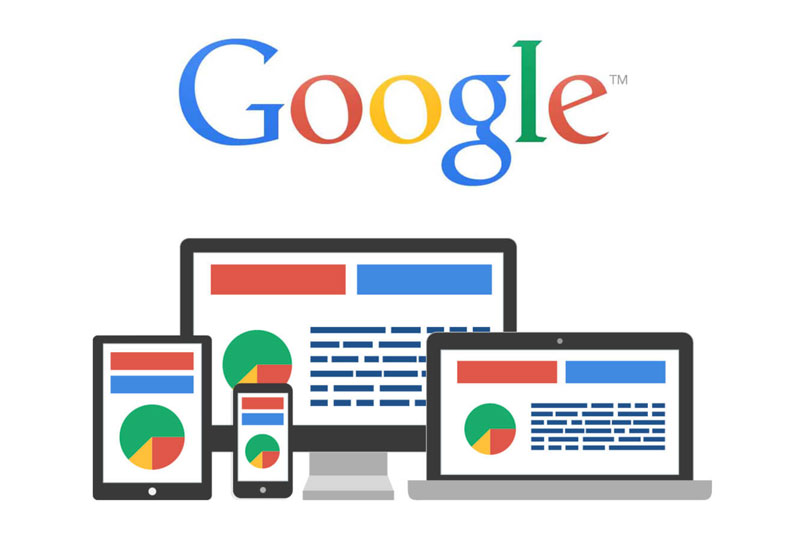We now live in a mobile-first era.
That’s because consumers are addicted to smartphones and tablets. And that isn’t changing any time soon.
In this environment, responsive design is no longer an innovation. Instead, it has become a standard component of any search engine optimization plan, regardless of industry.
Article Summary
- Improved Site Usability
- Faster Page Speed
- Decreased Bounce Rate
- Less Duplicate Content
- Boosted Social Sharing
Why You Need Responsive Web Design
The web has moved forward at an incredible rate over the past year. Among the many changes, the inevitable happened. Mobile web browsing overtook desktop as the device of first choice for internet users.
Of the people who only use one type of device, twice as many are using smartphones over desktop computers.
Neither of these observations would have taken web designers and marketers by surprise. And yet, the slow response of both business and the online industry to the new state of the web is a little baffling.
In spite of the premonitions from the industry as well as published statistics, many still have not responded well to a basic and obvious demand – responsive web design.
According to some, the number of those who have failed to adapt to the demand for a responsive environment is as high as 60 percent.
This should be a cause of concern for all businesses.
Google is built for users – for people who search the web. In a world where those users are accessing the web via mobile devices, Google is acting accordingly. And so, it stands to reason that they are going to favor those sites that meet the needs of Google users.
In short, Google is going to favor websites that are optimized for people using mobile and smartphone devices. Those websites are typically the ones that have incorporated a mobile responsive design.
If you aren’t yet reaping the SEO rewards from upgrading to a mobile responsive design, here are five reasons why you should make your move now.
1. Improved Site Usability
If users can’t easily navigate your website, it’s unlikely they will stick around.
Google recognizes ‘time on page’ as a fundamental indicator of a site’s value for any given query. Responsive web design makes your website much easier for visitors to read and navigate. The result is an improved user experience and typically a greater time on site.
Good usability scores lead to repeat visitors and increased conversions. As noted above, Google is in the business of satisfying user queries.
A mobile responsive web design is fundamental to a positive user experience, and Google is going to reward sites that meet users with such an experience.
Customer experience and site usability can’t be over-emphasized. Businesses and digital marketing agencies must remain vigilant when it comes to conversion and customer experience.
Positive reviews, traffic, and a rise in branded searches – all of which can impact ranking – come as a result of customer experience. And beneath those factors lay the design elements of a website.
Customer journey and customer experience are what makes businesses online succeed and mobile responsive design is the foundation upon which all experience occurs.
Just as important, is the fact that increasing site usability through responsive design not only satisfies users but is typically rewarded by Google with better search engine rankings.
2. Faster Page Speed
Page loading times are an established and known ranking factor.
Every website should be optimized to load as quickly as possible to help the odds of it ranking well in search engine results.
The consistent message from Google over the years has been that fast-loading sites are favored in search results.
That’s just one of many reasons why Google recommends using responsive web design.
Websites that are mobile responsive will ordinarily load faster (especially on mobile and smart devices), resulting in a more positive user experience as well as a likely boost in ranking.
3. Decreased Bounce Rate
Bounce rate is related to time on site. How quickly do your visitors backtrack or leave your website? Google pays attention to user behavior when it comes to entry and exit points for a website.
Google might interpret short dwell time (leaving a site almost as quickly as you came to it) as a signal that the content that the searcher found on your site wasn’t relevant to their needs.
The consequence for the website will be a negative adjustment in their ranking in Google search engine results for that query.
But it’s not only the content that users are interested in. In fact, it could be argued that on many occasions, design outweighs content. The content may be magnificent, but if the design prevents easy comprehension, users will soon leave the site.
A mobile responsive design enables you to not only put up relevant content for use but also display it in a way that is mobile device friendly. It provides a clean, crisp and undistracted environment for users to browse your website.
4. Less Duplicate Content
As intelligent as Google’s algorithms are, it still requires direction from you on which of your website’s content is most important.
Those who have decided to go down the path of a separate mobile site have a difficult time managing duplicate content issues. Using a separate website for your mobile client requires using a separate URL.
The problem is that the content on the desktop and mobile URL is the same, even though the URL is different.
This duplicate content can seriously harm your rankings. If you do not make it clear to Google which content is most vital and ensure that it is the content being indexed, then they will have to decide for you.
The result is almost always lower rankings in search results. (Most separate mobile sites don’t rank well in search engines because they are canonicalized to their desktop counterparts, which is another benefit of responsive: you can focus your SEO on a single site.)
A mobile responsive website deals with duplicate content problems. Write a single URL regardless of the device being used to view the content.
5. Boosted Social Sharing
Responsive web design is built to make social sharing easy for the most dominant demographic online – mobile users.
Although social media can help SEO, social shares won’t have a direct impact on rankings. But it will help you grow an audience.
A bigger audience can mean more traffic and engagement, as well as more search demand for your brand – which will definitely make Google take notice.
A website that is not optimized for mobile and smartphone users is going to have a difficult time in convincing its users to navigate the awkward and poorly designed social sharing buttons that are designed for purely desktop use.
This article first appeared in The Search Engine Journal
Article by David Trounce
About DigitalWires
A full-service web hosting, design and marketing company, DigitalWires specializes in helping small and medium-sized businesses develop internet strategies to enhance their current marketing efforts.


